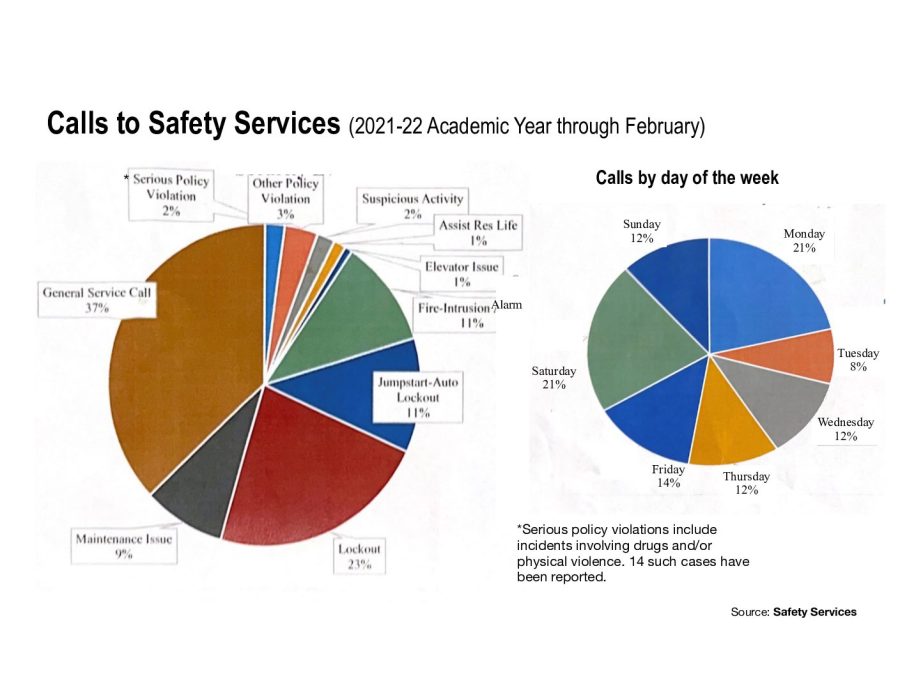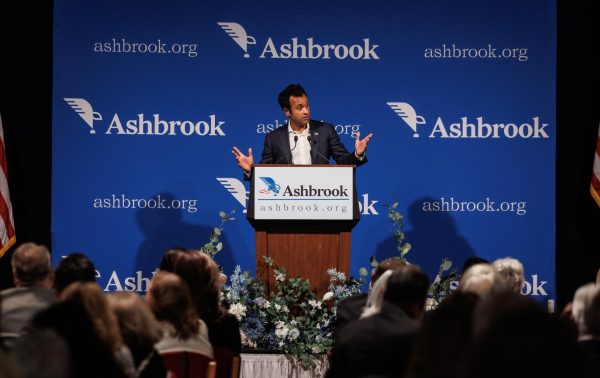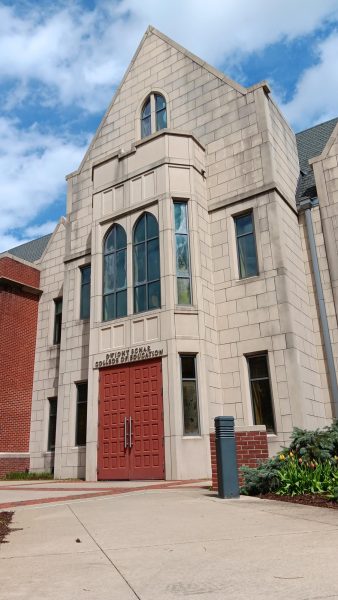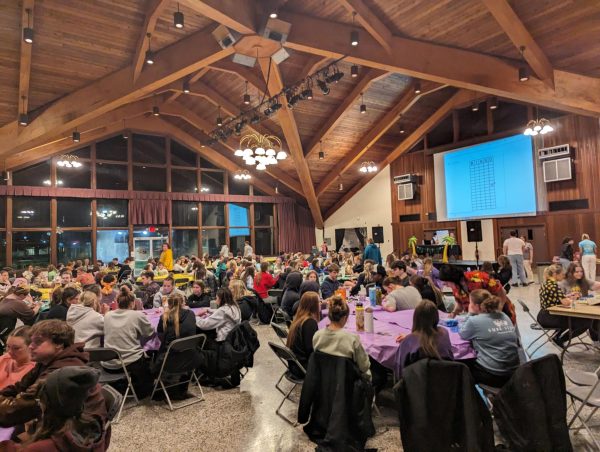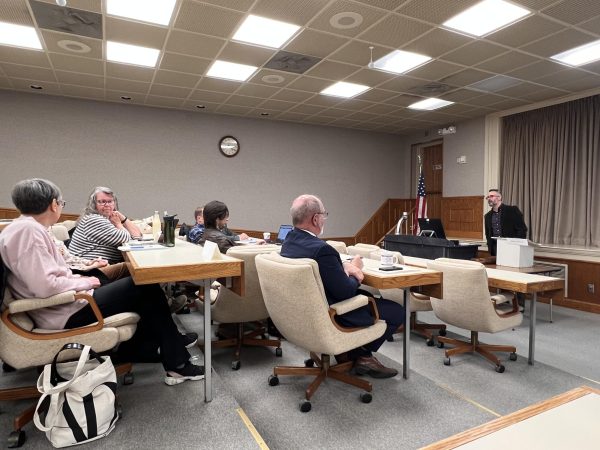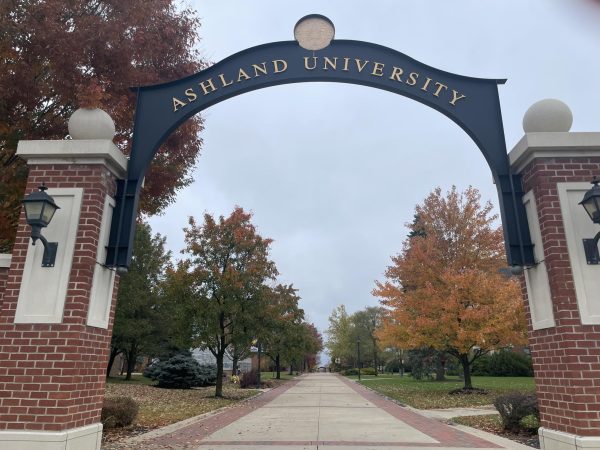Emergency blue lights being removed across campus
DATA COLLECTED FROM SAFETY SERVICES
This chart details the amount and type of calls made to safety services during the current academic year.
April 1, 2022
If you were needing a telephone for an emergency call or being locked out of your room, you will have better luck pulling out your cell phone rather than looking for those familiar emergency blue-light boxes across campus.
Ashland University’s Facilities Department is in the process of removing all blue lights and emergency telephones when they need repairs instead of replacing them.
Instead, university officials are encouraging students to use Campus Shield mobile app when you need assistance from Safety Services.
“When blue light emergency lights were installed, there was a large number of people who didn’t have cellphones yet,” said Rick Ewing, vice president of operations and planning.
Ewing explained that as blue-lights need repair, parts are no longer available because they are so outdated compared to current technology.
“It was either replacing them entirely or taking them out… it is more of a risk to have a non-functioning blue light rather than just removing the light when it is not properly working anymore,” Ewing added.
In the 1990s, college and university campuses began installing the blue-light emergency boxes to improve student safety, in large part when the federal government passed the Clery Act, which required all higher education institutions receiving federal funding to disclose incidents of crime on campus.
Dave McLaughlin, director of Safety Services, said the blue lights were rarely used for their intended purpose of emergency calls or situations where an individual is feeling threatened.
“I can’t recall an incident in the past decade where anyone has used the blue-light phone for an emergency situation. We get our emergency calls from cell phones,” McLaughlin said.
Neither McLaughlin or Ewing were able to identify how many blue lights were on campus or their locations since the removal process is ongoing as the lights continue to fail.
Although the removal of blue lights might raise a couple eyebrows among the student body, McLaughlin provided some statistics that he believes ensure the safety of students.
Lockouts are the most common calls to Safety Services, based on statistics dating back to January 2021. On average the students have an 8-minute window until help arrives.
The next most frequent calls are for fire alarms, with an average response time of 3 minutes. The Ashland Fire Department is notified when the Safety Services is called to reset a fire alarm. The AFD will respond when an incident happens in an administrative building, but not a residence hall.
Since the 2021 academic year has started, the Safety Service team has responded to 14 emergency incidents with an average response time of 3 minutes. McLaughlin said an emergency incident would be when there is violence and someone is feeling threatened or drug-substance use related.
Campus Shield has been touted as a replacement for the blue lights.
McLaughin said Campus Shield has been heavily promoted to Ashland University students to “heighten safety throughout the campus.”
He also says the app is great for pushing out information whether it has to do with the weather like a storm watch or if an individual is on campus who shouldn’t be.
“We feel that it gives you that individual alert notification that can be sent to anyone whether you’re a student, faculty, or parents of students who can sign up,” Ewing said.
Campus Shield handles emergency and non-emergency calls for students in cases of needing an escort, lockout, or if it is an emergency. You can submit anonymous tips and send pictures to campus security through the Campus Shield app if you see something on campus that doesn’t look right.
McLaughlin and Ewing both said Campus Shield is a tool that could improve every student’s experience.
“I would love to see more people download and subscribe to the Campus Shield,” McLaughlin said. “They can do it by going to our website and seeing the tutorial of how to discover all the features for Campus Shield.” As of December 2021 4,343 people – students, faculty or parents of students – have downloaded Campus Shield.
“If you see something, please say something when you see it. Half of the time it is too late where we can’t do anything about it or we were never aware of situations where we can help because nothing was reported,” McLaughlin concluded.


